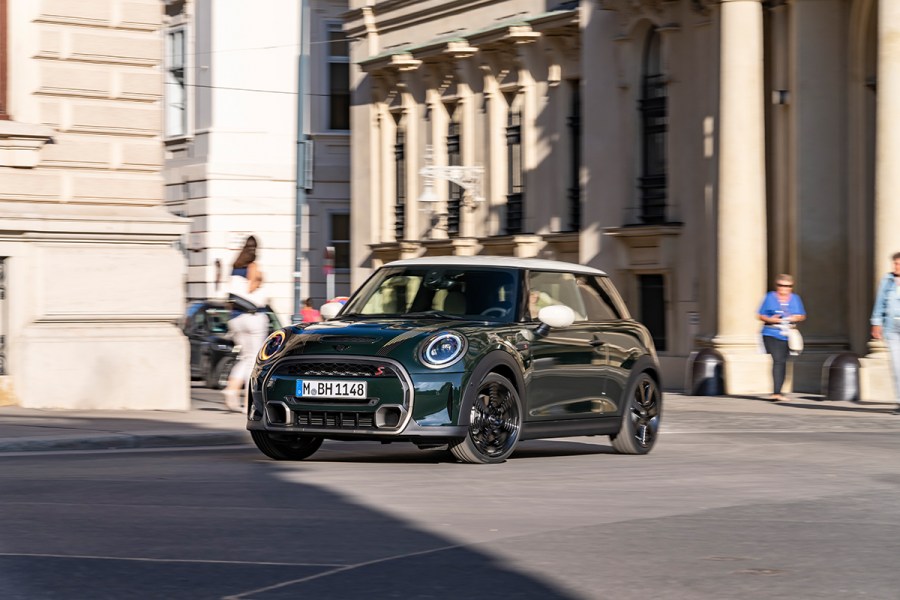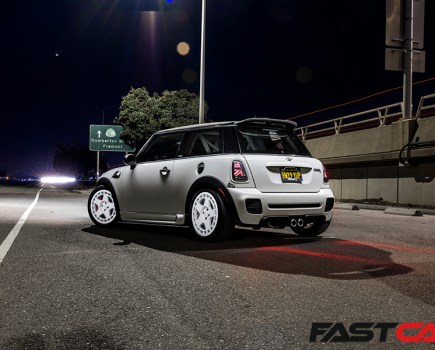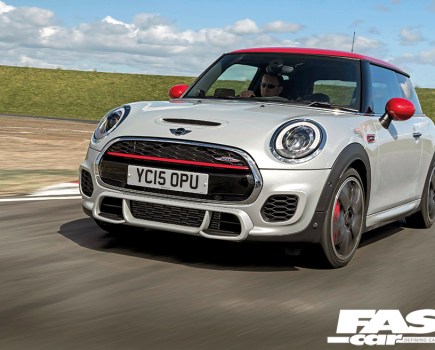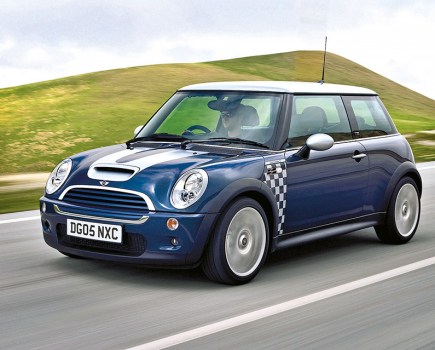The styling might be similar, but the F56 was the biggest Mini revolution since the launch of the original R50 in 2001. We tell you how to buy the best third-generation hatch and reveal the most common problems.
The second-generation R56 was an evolution of the R50/R53, fixing many of the first-generation Mini faults and making key improvements. The current, third-generation Mini F56 hatch was all-new and probably represented the biggest change for the brand in the 13 years since Mini was relaunched. Unsurprisingly, it makes for one of the best used cars you can buy in 2023.
Mini F56 vs R56 changes
Firstly, under the bonnet where, following American-Brazilian then French-supplied power, these Minis were the first to receive BMW’s own Twinpower turbocharged three- and four-cylinder petrol and diesel engines. Then there was the UKL1 chassis that was also all-new, more rigid and has since gone on to underpin BMW models such as the 2 Series MPV. However, BMW stuck to its already proven suspension design but made it stronger and lighter, maintaining the fun-to-drive package that the Mini has always been since its BMW rebirth.
Outside, Mini couldn’t move too far away from the design language established by the Frank Stephenson original. However, that didn’t stop the tweaking, with the large bug-eyed headlights and chrome-edged grille and the sizeable rear light clusters at the back. The third-gen Mini F56 is also longer and wider than its predecessors; if you park a Mini F56 next to a first or second-generation, you’ll see how it dwarfs them in size. In profile, you’ll also notice it has a much longer overhang at the front, the result of new crash regulations, and as such, it’s not such a well-proportioned design as the first two.
Inside, the soft-touch plastics and interior trim are more than a match for any you’ll find in a BMW. Gone is the almost laughably large central speedo of the R56, replaced by a central color infotainment screen – sat-nav or not. Instead, the speedo moves to the rev counter on the steering column. Elsewhere, space in the front is fine, but, despite more foot and shoulder room in the back, rear space is still tight. At 211-liters, the boot is up 61-liters over the R56.
Relevant content: R56 Mini Buyer’s Guide and Most Common Problems.

Mini F56 History
The first F56 Mini models were available at launch in the UK and US from March 2014. Performance Cooper and Cooper S versions, plus the frugal Cooper D were available in the UK – although there was no diesel for the US market. The Cooper boasted 136hp and a 0-62mph time of 7.9 seconds, yet, despite the performance, the lukewarm hatch was still capable of a 62.8mpg combined consumption figure. Go for the Cooper S, and the power was boosted to 192hp, with torque up to 206lb ft and 0-62mph acceleration in just 6.8 seconds. However, like the Cooper, the F56’s performance wouldn’t hit too hard at the pumps, with a 49.6mpg combined figure.
In 2015, the Cooper SD was added for Europe, plus performance range-topper John Cooper Works.
Another European-only model was the One, which was powered by a 1.2-litre version of the Twinpower engine with 102hp and a top speed of 121mph. The diesel version of the One was fitted with the same three-cylinder 1.5-litre as the Cooper D, here detuned to 95hp. The Cooper SD offered the best performance and efficiency mix; power was up to 170hp, 0-62mph acceleration took just 7.3 seconds, and it was still capable of 70.6mpg. The F56 JCW hatch definitely lived up to its hot hatch tag, with 231hp, 0-62 acceleration in just 6.1 seconds even in auto form, and a top speed of 153mph.
LCI update
In 2018, the Mini F56 hatch received its LCI facelift with trim changes, new color options, brighter front headlights with circular ‘halo’ DRLs and Union Jack-style rear lights.
We might have been in the thick of the pandemic, but the first lucky owners, of the fastest third-generation Mini, the GP, took delivery of their cars in May 2020.
That wasn’t the end of the facelifts, as Spring 2021 equaled another more significant one, with new bumpers, grille, colors, and trims.
Mini F56 Timeline
- March 2014 – F56 Cooper (136bhp), Cooper D (116bhp) and 192bhp Cooper S hatchback models launched in the UK. Only Cooper and Cooper S models for the US market.
- May/June 2015 – Performance range-topper, the John Cooper Works (JCW) launched with 208bhp. JCW adds bespoke sports transmission, suspension and Brembo front brake calipers, with prices starting at £20,995. Europe-only Cooper SD and entry-level One models also introduced.
- June 2016 – F56 JCW Challenge launched in the UK. Developed by a skunkworks team of Mini engineers at the Oxford factory and journalists from EVO magazine, this JCW was produced as a road version of the UK MINI CHALLENGE race car. As thus, it was fitted with upgrades from suppliers of the race series, including adjustable Nitron coilover dampers, a proper Quaife limited slip differential, plus Team Dynamics wheels with Michelin Pilot tires. The result was 50 cars sold at £32,000 each.
- May 2018 – F56 Mini models receive LCI facelift with trim changes, new color choices, brighter headlight with circular DRLs, and Union Jack rear lights.
- March 2019 – JCW hatch relaunched in the UK with a petrol particulate filter to meet stricter Euro 6d-TEMP emissions standard, part of the changes resulting from the introduction of the Worldwide Harmonized Light Vehicle Test Procedure or WLTP legislation.
- March 2020 – all-electric Mini Cooper SE versions launched.
- May 2020 – The most extreme development of the F56 JCW hatch, another GP two-seater is launched. This GP features unique carbon fiber arches, rear wing and 18-inch wheels. Power for the B48 TwinPower turbo engine is up to 306bhp, acceleration to 62mph now takes 5.2 seconds, and the top speed is 165mph.
- April 2021 – Second LCI facelift models launched, with new bumpers, grille, colors, and trims.
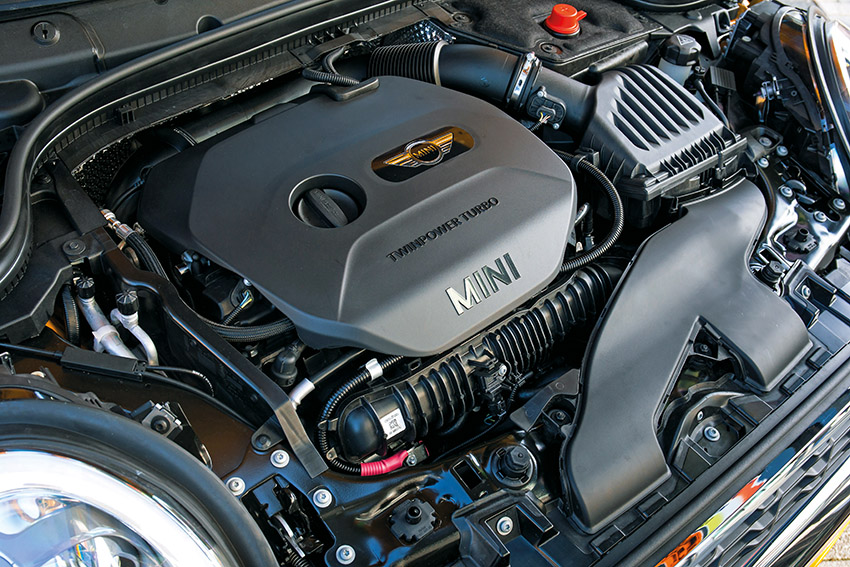
What to look out for on the Mini F56 Cooper and Cooper S
Does the Mini F56 engine have any issues?
The Mini’s Twinpower engines have proved, in general, to be reliable, but there was a problem on early Cooper and Cooper S engines with the crank bearing. We were told that with some of the engines they managed to change the bearing – others involved a complete engine swap! Other than that, there were some recalls for the oil solenoid early on, again for Cooper and Cooper S models.
The Mini F56 JCW is powered by a 2.0-litre B48 turbocharged in-line four from the same engine family. Thankfully, the B48 doesn’t appear to be affected by problematic crank bearing or oil solenoid issues on early F56 Cooper and Cooper S models. In fact, the only mechanical issues we’ve heard of with the B48, were some problems with the injectors and some odd air leaks. Engine mounts can fail, so listen for odd noises on start up.
Any suspension problems on the Mini F56?
The F56 hatch has precise steering and entertaining handling – although the ride on the optional 18in wheels can be a bit firm. This sharp handling is the result of standard MacPherson struts, coil springs, an anti-roll bar and of course the rear Z-axle. Adaptive dampers on the JCW are a popular option, but the firmest Sport mode is probably best left for the track, as it feels too compromised on the road.
Thankfully you can mix and match driving modes with dampers settings. The standard passive dampers are as stiff but are ripe for upgrading. The handling of the JCW hatch is also susceptible to tire choice; the OEM Pirelli tires are least favored by owners. UK-only Challenge limited edition shows what modifications could be done, with the standard fit adjustable Nitron coilover dampers. The F56’s lofty stance can be fixed by fitting this adjustable suspension – especially at the front.
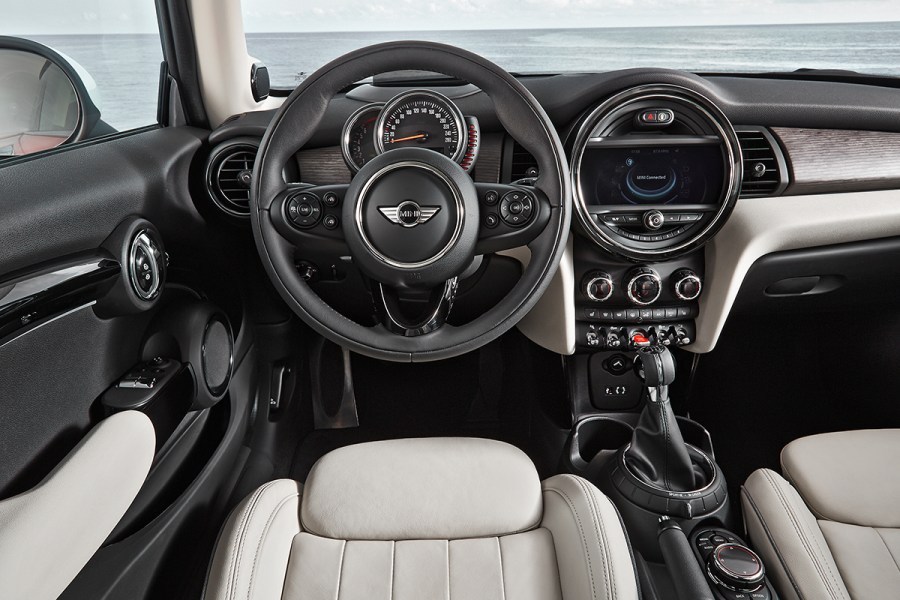
Mini F56 Transmission
There is the choice of six-speed manual and six-speed automatic transmissions, and problems are rare. However, watch remapped JCW autos – as there have been reports of failures. Clutches are strong on manual cars, but squeaks are common and will go with adjustment.
Electrics
F56-generation Minis are the newest, so as you’d expect electrical problems are rare – but there are reports of some isolated issues. These mostly revolve around the sat-nav system and failure of the steering wheel horn push.
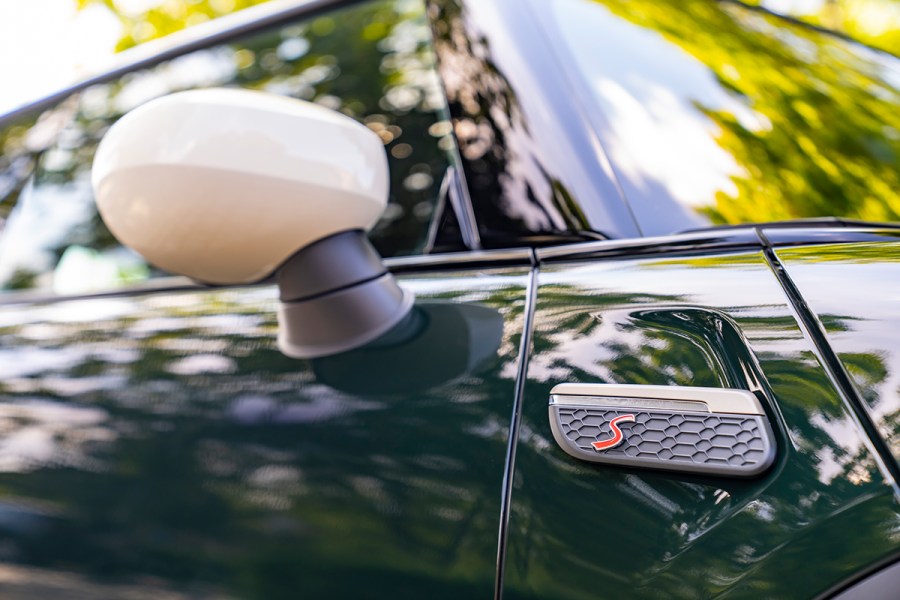
Bodywork
Outside, Mini couldn’t move too far away from the design language established by the Frank Stephenson original. However, the biggest changes for the third-generation Mini are the large bug-eyed headlights and chrome-edged grille and the sizeable rear light clusters at the back. Longer and wider than its predecessors, in profile, you’ll also notice it has a much longer overhang at the front – the result of new crash regulations. As such, it’s not such a well-proportioned design as the first two.
With the oldest F56 Mini over nine-years old, rust isn’t a problem , but watch for rubbed paint around the door shuts, faded plastics and misted headlights.
Mini F56 Interior
Inside, the soft-touch plastics and interior trim are more than a match for any you’ll find in a BMW. Gone is the almost laughably large central speedo of the R56, replaced by a central color infotainment screen – sat-nav or not. Instead, the speedo moves to the rev counter on the steering column. Elsewhere, space in the front is fine, but, despite more foot and shoulder room in the back, rear space is still tight. At 211-litres, the boot is up 61-litres over the R56.
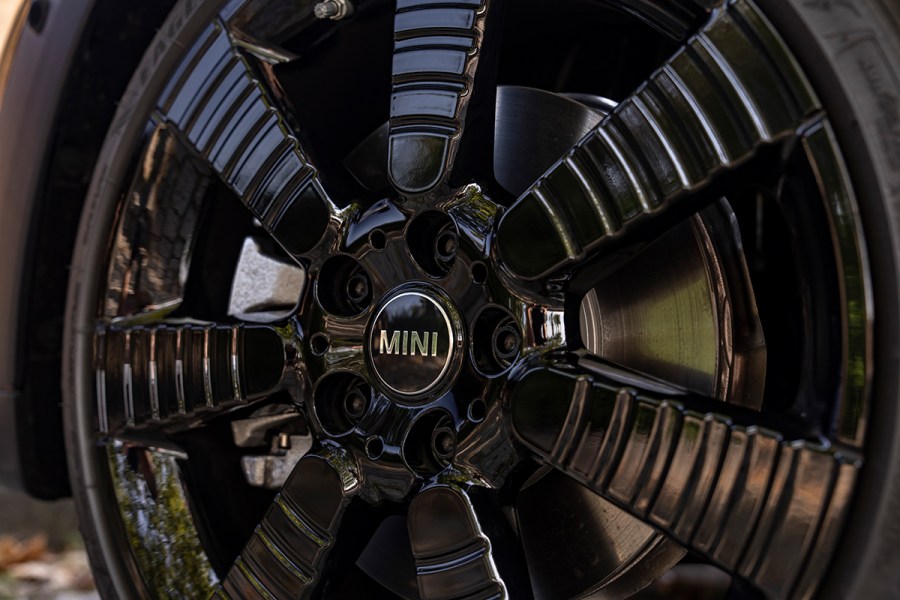
Wheels
Watch for curbing damage on the alloy wheels; Cooper S and JCW models generally have the biggest rims and as such are more susceptible. Wheels can be refurbed, but excessive damage could equal suspension alignment issues.
How much should I pay for a Mini F56?
- $10,000 – $15,000: Earliest 2014 Coopers start at $10,000, but expect at least100,000 miles, add another $5,000 to get into faster Cooper of the same age with a clean title.
- $16,000 – $20,000: Here’s where 2016 models start with around 50,000 miles, or later lower spec cars. Earliest 2015 John Cooper Works hatches with around 80,000 miles start at the top of this budget.
- $21,000 – $25,000: For this budget, this gets you later 2018, 2019, better equipped cars. Plus, higher mileage 2020 LCI facelift cars – some at Mini dealers.
- $26,000 – $30,000: Lower mileage 2020 Coopers, higher mileage Cooper S versions. $25,000 seems to be the entry price for the all-electric Cooper SE with 20,000 miles.
- $31,000 – $35,000: You’ll find higher mileage 2021 cars with 20,000 miles here and lower mileage 2022 models. As new models are at the top of this price band with nominal miles at Mini dealers.
- $40,000 – $45,000: This what you’ll pay for the fastest F56 GP, cars at the top of this price bracket will have less than 5,000 miles.
F56 Mini UK prices
- £6,000 – £8,000: Earliest 2014 Coopers start at £6,000, for a Cooper S add £2,000 to this, plus lower mileage 2015 Ones.
- £8,000 – £12,000: Here’s where you’ll find the lowest mileage 15 and 17 cars, plus the earliest John Cooper Works and highest mileage LCI Ones, Coopers and Cooper S’s.
- £12,000 – £16,000: For this budget, you get the lowest mileage, late 17 to 20 plate registration cars with the best specification.
- £16,000 – £20,000: This is the price range for the best of the first LCI Cooper, Cooper S and JCW. It is also where you find the first of the second-facelift models, right from the basic One Classic, through to sportier Coopers in ‘Sport’ specification.
- £20,000 – £30,000: This where you find nearly-new, highest spec Cooper, Cooper S and JCW models at dealers.
- £30,000 – £40,000: The fastest F56 GP models, are priced from £30,000 and will have up to 20,000 miles.

Differences between US and UK Minis
Apart from US spec front and rear wheel arch lights, there are no other bodywork changes between UK and US Minis.
However, there are no diesel Minis available in the US, or entry-level One models. Only Cooper, Cooper S and John Cooper Works models have ever been available in the US.
US-spec F56 Cooper and Cooper S models weigh 60 and 90 lbs more than European models. This is because there’s much more standard equipment on US cars, compared to the previous R56. Much of this extra weight came from three US market changes to the F56: Two additional airbags at knee-level, reinforced B-pillars, designed for the NHTSA’s rollover standards, a larger, more substantial A-pillar airbag system.
A Mini 20 Years Edition, exclusively in the US, and based on the Cooper S was launched in 2021, to celebrate 20 years of Mini USA.
If you want to know more about the aftermarket performance potential of these cars, be sure to read our F56 Mini tuning guide.
Words: Martyn Collins. (Martyn is a well-respected motoring journalist and ex-editor of popular magazine Modern Mini, as well as the author of book New Mini)

